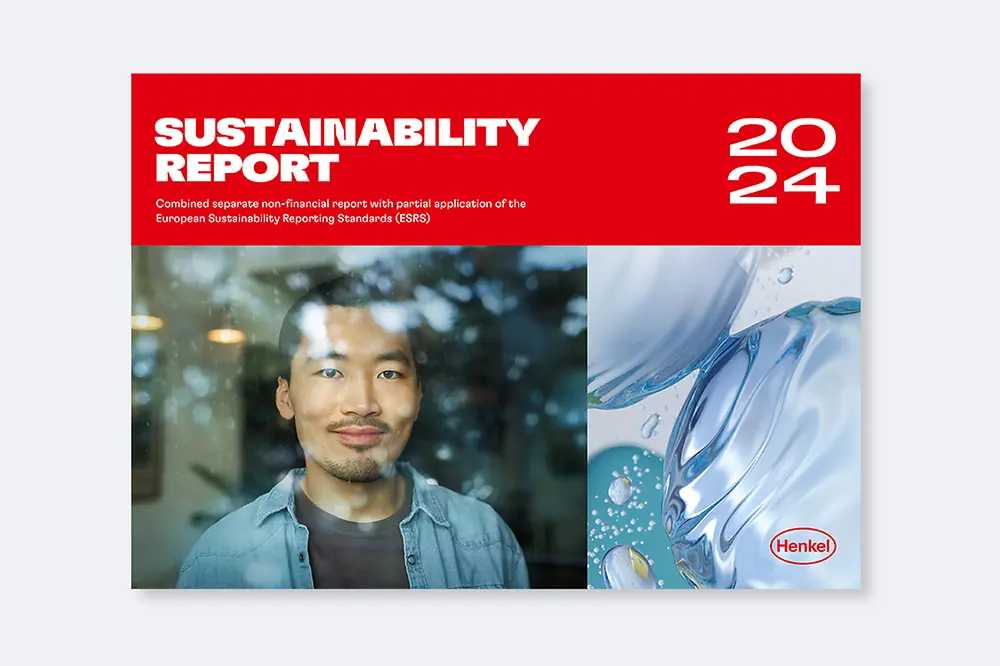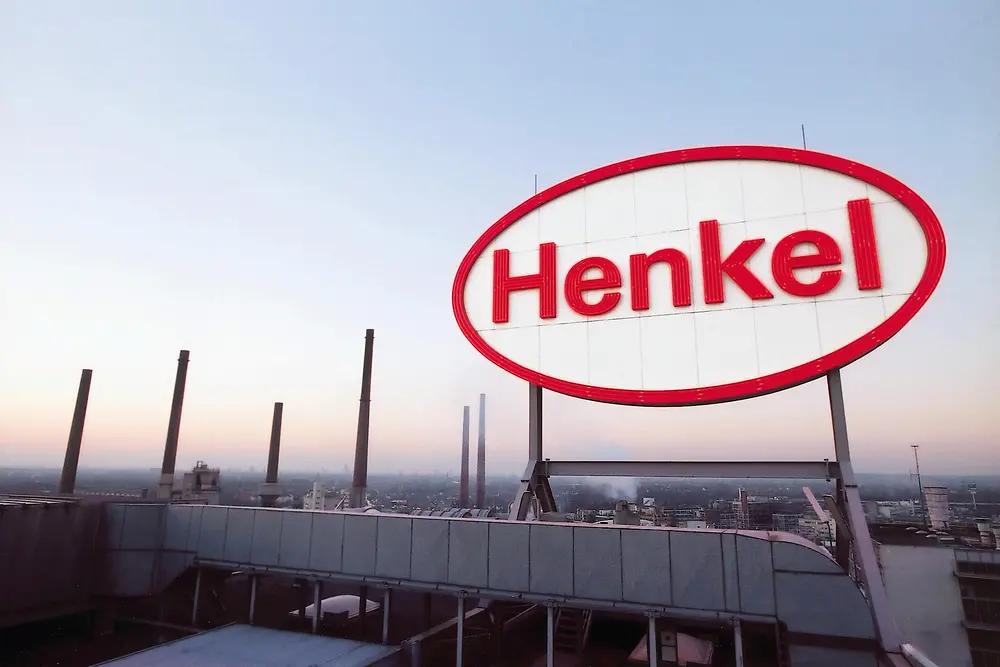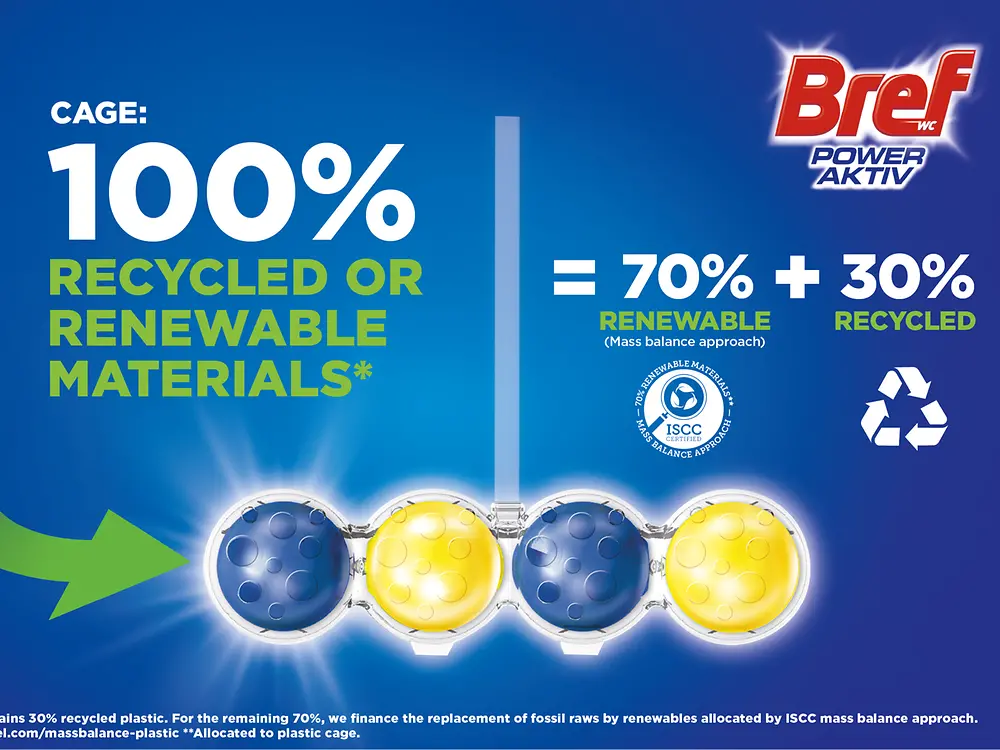Henkel works closely with its suppliers to increase the proportion of renewable raw materials in the production of ingredients for its products. Together with its partner Moeve, Henkel has recently succeeded in using a new surfactant for the production of most of its toilet rim blocks, which is produced from 68 percent renewable raw materials according to the mass balance approach. Henkel has been following a similar path with its partner BASF for some time, replacing fossil raw materials for around 110,000 tons of ingredients per year with renewable raw materials according to the mass balance approach. This reduces the footprint of products from other well-known brands such as Persil and Schauma.
In addition to the ingredients, Henkel also relies on the use of renewable raw materials for the plastic cages surrounding the toilet rim blocks, according to the mass balance approach. The baskets already consist of 30 percent recycled plastic. For the remaining 70 percent of virgin plastic (excluding color granules for colored plastic cages), which cannot yet be replaced by recycled material due to availability, safety, or aesthetic reasons, the company is now investing in collaboration with its suppliers to increase the proportion of renewable raw materials for the production of plastic. Compared to conventional fossil-based virgin plastic, the so produced plastic based on renewable raw materials will come with a lower CO2 footprint, amounting currently to more than 10,000 tons CO2 in annual savings (based on sales figures as in previous year).
“The use of renewable raw materials in the production of ingredients and plastic according to the mass balance approach is an important step to reduce the CO2 footprint of our products in the upstream value chain. Therefore, it is also a key lever for our goal to achieve net-zero by 2045,” says Marjon Stamsnijder, Head of Sustainability at Henkel Consumer Brands.






